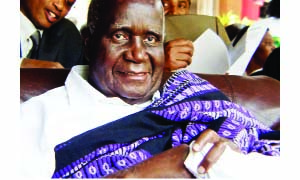Policy Analysis by James Muyanwa –
DETERMINED to safeguard land and empower his citizens, late first Republican President Kenneth Kaunda came up with sweeping land policy measures in 1968, four years after attaining political independence from the British.
During the Mulungushi Economic Reforms in 1968, specific land reforms were pronounced including the fact that all land should be vested in the president and the conversion of freehold land to leasehold for 100 years.
Last week, we looked at Dr Kaunda’s national land policy for Zambia during the transitional period from the British rule and as I noted, the transitional era provided a lot of challenges for the government leaders on land issues.
One of the encounters was that the white settlers would do anything to frustrate Kaunda and others especially in their efforts to empower the hitherto-discriminated native Zambians.
So, apart from pronouncing specific land reforms including the fact that all land should be vested in the president and the conversion of freehold land to leasehold for 100 years, the Mulungushi Economic Reforms espoused other changes.
They provided that all customary land should not be converted into leasehold tenure and that land reforms should target improving the use of agro land.
To give full effect to these provisions, Dr Kaunda’s administration enacted them into a statute called Land (Conversion of Titles) Acts of 1975.
This was after the enactment of the Lands Acquisition Act of 1970 which consolidated the government position.
The then Lands Acquisition Act of 1970, now Chapter 189 of the Laws of Zambia states that:
“…the President may, whenever he is of the opinion that it is desirable or expedient in the interest of the Republic so to do, compulsorily acquire any property of any description.”
It, however, has a provision for compensation.
The Lands Act was important in that it resolved the outstanding thorny issue of the white settlers’ flight as they left their large tracts of land unutilised and/or undeveloped.
As stated last week, because of the entrenched constitutional provision protecting the right to private property then, the Dr Kaunda’s Government was unable to legally acquire the land.
Therefore, a Referendum to amend the relevant Constitutional provision was held in 1969 leading to the enactment of the Act on absentee landlords and provided for the compulsory acquisition of property in Zambia.
Arising from the 1968 Mulungushi reforms and the Land Conversion of Title Act, 1975, most of the lands was converted to statutory leasehold and deemed to have been so converted with effect from the first day of July, 1975.
It was this same Act which declared that land had no market value although individuals could sell improvements on it, and in my view that was a vital proviso in land preservation.
Accordingly, through the Land (Conversion of Titles) Act 1975, Dr Kaunda completed and confirmed the land nationalisation programme by vesting all land in Zambia in the president, to be held by him in perpetuity on behalf of the people of Zambia.
Freehold land held by commercial farmers was converted into leaseholds for 100 years and unutilised tracts of land were taken over by the state.
Freehold titles in residential areas were similarly treated.
Any form of transaction or dealing in land without the prior consent of the president was prohibited.
This was the contention in a 1984 case between a Ms Bridget Mutwale and Professional Services Limited in which it was held that lack of presidential consent in land transactions rendered the action unenforceable by the court.
Further, all undeveloped land was acquired by the central or local government, as were most forms of rented property.
President Kaunda was empowered to fix the maximum amount received, recovered or secured in any land transaction, provided that in fixing such amount, no regard was to be taken of the value of the land, only the developments on the land.
These statutory provisions, which prevailed throughout the Second Republic up to 1995, brought out two important issues.
The first one was that any land or indeed any other property could be repossessed by the government whenever the president is of the opinion that it is desirable or expedient in the interest of the Republic so to do.
I bet the compensation for such a piece of property, in case of land, should be commensurate with the amount and value of developments on such piece of land.
This is because of the second factor which these laws brought about, that land had no value on its own.
As already indicated, no regard was to be taken of the value of the land, only the developments on the land!
This was aimed at addressing speculative tendencies, like we are having now, among the land buyers or holders and entailed that people could only acquire as much land as they needed for development.
Unlike now, land was not considered to be a commodity which could be traded anyhow.
In my view, while Dr Kaunda worked hard to get the land from the selfish people who did not want to let go of it, nothing much was done to place back the land in the hands of Zambians, especially the economically-marginalised indigenous ones.
Some observers say the efforts towards that was frustrated by the agitation for the Third Republic which ushered in multipartism and cut short Dr Kaunda’s rule.
Yet other observers say, leaving office without effective the land question by restoring land to the ‘owners’ the citizens of Zambia was one of Dr Kaunda’s failures after independence!
What do you think?
For comments: 0977 246099, 0955 431442 or e-mail: jmuyanwa@gmail.com







